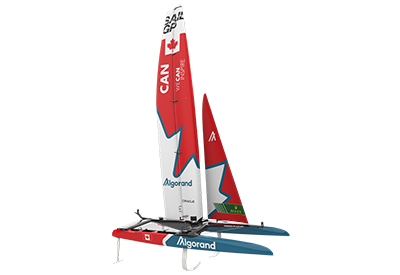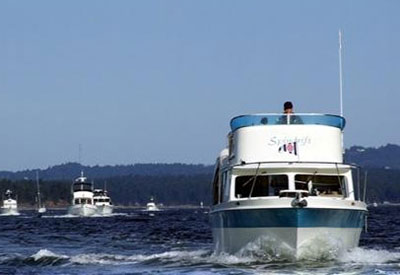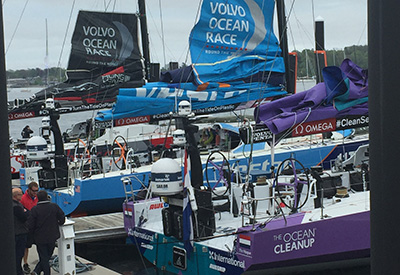Is Fiberglass Recyclable? Part 1

Feb 11, 2021
By Jay Weaver
Today many things are made from fiberglass, from automotive parts to boats, and bathtubs to wind turbine blades. Fiberglass is lightweight and strong, it is resistant to impact and is waterproof. It does not rot and can be repaired relatively easily. But recycling fiberglass, can it be done?
While the short answer is yes, there is more to it than that. Shredding or grinding the fiberglass destroys many of the glass fibers, reducing their size, strength, and therefore the usefulness for future applications. It’s not as simple as recycling other plastics because of the glass fiber content.
How I became more aware of the problem
 My 1968 Columbia 22 I saved from the landfill in October 2019
My 1968 Columbia 22 I saved from the landfill in October 2019
I learned to sail with my Dad and now I have a 1968 Colombia 22. The old guy who I got the boat from knew it needed either a lot of love or was destined to go to the landfill. It was eight long months of nights and weekends restoring and repairing the boat. Bringing the old fiberglass boat back to life and enjoying it on the fresh waters of Lake Michigan was priceless.
In my adventures of the beaches and waterways, I have been surprised at the number of plastic bottles, mylar balloons, and trash. With the pollution and plastic, I picked up, many times I returned to my car with a full bag of trash. Picking up trash and plastic when I find it is a good habit that I always have practiced. But it can feel like it doesn’t make much of a difference in the pollution problem.
Now I am living in Central America, where the garbage and recycling is not treated the same as in the United States or Canada. There are many places along the roads where trash is just dumped and not covered up. I have the opportunity to go the Pacific Ocean in a short 40 minute drive, and see the plastic washing up on the beaches. It makes one aware of the need to deal properly with plastic waste. Like older boats.
The growing sources of fiberglass
 The boating industry was and is a very big producer of fiberglass, changing the scene in the 1960s. Boats could be made much more quickly and cheaply, and the boats didn’t rot and need constant maintenance like the previous wood boats. This opened the market up to many people that otherwise would not have been able to afford a boat.
The boating industry was and is a very big producer of fiberglass, changing the scene in the 1960s. Boats could be made much more quickly and cheaply, and the boats didn’t rot and need constant maintenance like the previous wood boats. This opened the market up to many people that otherwise would not have been able to afford a boat.
But now many of those 50 and 60-year-old boats cost more to get rid of them than they are worth. It’s sad to see some of the classic boats come to the end of their useable lives. Many have been neglected and haven’t been properly maintained properly and the ingress of water in the wood sandwich decks and through leaky windows cause damage that costs more to fix than the boat is worth.
There is also the effect of hurricanes; the Boat Owners Association of The United States (BoatUS), estimates that more than 63,000 recreational boats were damaged or destroyed as a result of both Hurricane Harvey and Hurricane Irma. The combined dollar damage estimate is $655 million. The most common method for the end of life of one of these boats is to remove the good parts and send the fiberglass hull to the landfill.
 The automobile industries in the United States and Europe have done research into recycling fiberglass car bodies and determining how to do it. Automotive recycling is a significant and growing component of automobile manufacturing and for the same reason faced by the boatbuilding industry, and that is too many cars on the road slowing sales of new cars.
The automobile industries in the United States and Europe have done research into recycling fiberglass car bodies and determining how to do it. Automotive recycling is a significant and growing component of automobile manufacturing and for the same reason faced by the boatbuilding industry, and that is too many cars on the road slowing sales of new cars.
The boatbuilding industry has made only small and sporadic attempts to recycle its products, certainly nothing on the scale of the automobile industry. And boats have some particularly undesirable features that make them much more difficult to recycle than cars. But that is how we see it today, with innovation and making recycling more common, it’s likely that more opportunities will arise for the old boats.
Next time, Emerging innovations in fiberglass recycling
 About the author
About the author
Jay Weaver, 33, grew up sailing with his Dad in Michigan, and recently restored his 1968 Columbia 22 that he sailed on Muskegon Lake and Lake Michigan. Currently living in El Salvador, he became much more aware of the environmental impact of plastic pollution in nature and the ocean.





























